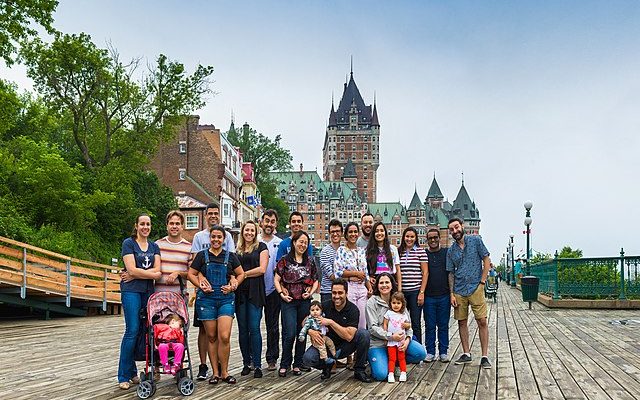Canada Immigrants. Image credit: Wikimedia Commons
#Canada; #ImmigrationPlan; #LaborMarketShortage; #CanadaEconomy
Ottawa/CMEDIA: An ambitious 2022‒2024 Immigration Levels Plan was tabled today by Sean Fraser, Minister of Immigration, Refugees and Citizenship, to enable immigration in the recovery of the Canadian economy and fuel post-pandemic growth, all while strengthening communities and industries across the country that rely on immigration.
“Immigration has helped shape Canada into the country it is today. From farming and fishing to manufacturing, healthcare and the transportation sector…Setting bold new immigration targets, as outlined in the 2022-2024 Levels Plan, will further help bring the immeasurable contribution of immigrants to our communities and across all sectors of the economy,” said Fraser in today’s news release.
The contributions of newcomers to the well-being of our communities and across all sectors of the economy have been highlighted during the pandemic.
A record number of 405,000 new permanent residents—the most immigrants in a single year in our history were welcomed by Canada during the last year.
Immigration already accounts for almost 100% of labor force growth, and with 5 million Canadians set to retire by the end of this decade, the worker to retiree ratio will drop down to only 3:1. This is a clear sign that we have a strong economic need for increased immigration.
Despite having regained many of the jobs lost during the pandemic, there are still hundreds of thousands of positions in all sectors waiting to be filled.
“Our immigration system has helped shape Canada into the country it is today – one that is prosperous, diverse, and welcoming to those in need. Newcomers enrich and better our communities…Throughout the pandemic, they have been on the front lines…Without them, Canada would not have been able to overcome challenges in critical industries and sectors of the economy over the past 2 years. Now, more than ever, immigrants are a key part of our country’s continued success,” said today’s news release.
The 2022–2024 Immigration Levels Plan aims to continue welcoming immigrants at a rate of about 1% of Canada’s population, including 431,645 permanent residents in 2022, 447,055 in 2023, and 451,000 in 2024 to ensure Canada has the workers it needs to fill critical labor market gaps and support a strong economy into the future.
Highlights of the plan include:
- overall admissions amounting to 1.14% of the Canadian population by 2024.
- a long-term focus on economic growth, with nearly 60% of admissions in the Economic Class.
- help for vulnerable populations, like the special measures for granting permanent residence to refugee claimants working in health care during the pandemic.
- support for global crises by providing a safe haven through humanitarian immigration to those facing persecution.
- talent retention of those already in Canada by granting permanent status to temporary residents accepted through the time limited pathways for essential workers launched in spring 2021.
This plan builds on the previous levels plan, with an increased focus on supporting our economic resurgence and post-pandemic growth.
To support these increased levels, the Government of Canada recently announced a plan to modernize Canada’s immigration system to fuel economic recovery and improve client experience, which will help address key challenges faced by our clients, such as reducing inventories and creating predictable processing times that our clients expect and deserve.
This plan will help increase the attraction and retention of newcomers in regions with acute economic, labor, and demographic challenges. It will also increase Francophone immigration outside Quebec while supporting the successful integration of French-speaking newcomers and strengthening Francophone communities across the country. As part of our Francophone Immigration Strategy, we’re working to reach a target of 4.4% of French-speaking immigrants outside Quebec by 2023.
This plan also recognizes the importance of family reunification and helps maintain the 12-month processing standard for spouses and children.
Firm in its global humanitarian commitments, Canada also plans to resettle at least 40,000 Afghan nationals over the next 2 years. To date, more than 7,550 Afghan refugees now call Canada home as a result of these efforts.
“The 2022–2024 Immigration Levels Plan will help cement Canada’s place among the world’s top destinations for talent, creating a strong foundation for post-pandemic economic growth while reuniting family members with their loved ones and fulfilling Canada’s humanitarian commitments”, said the news release.





